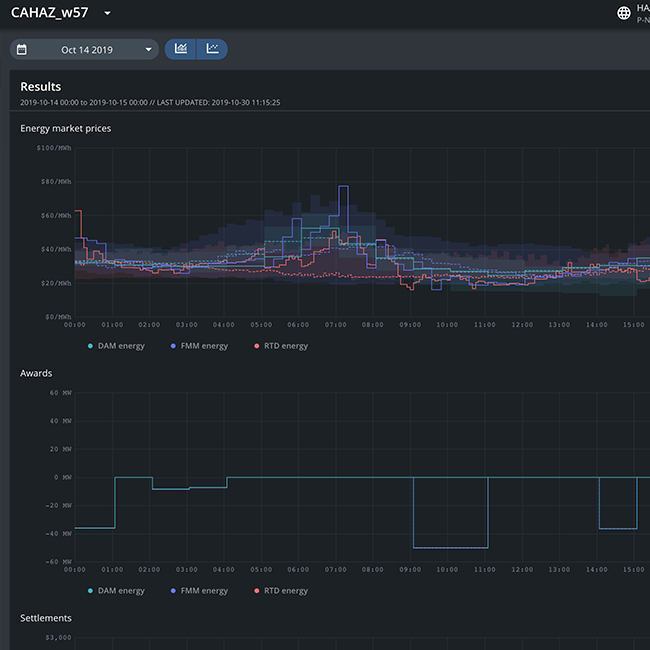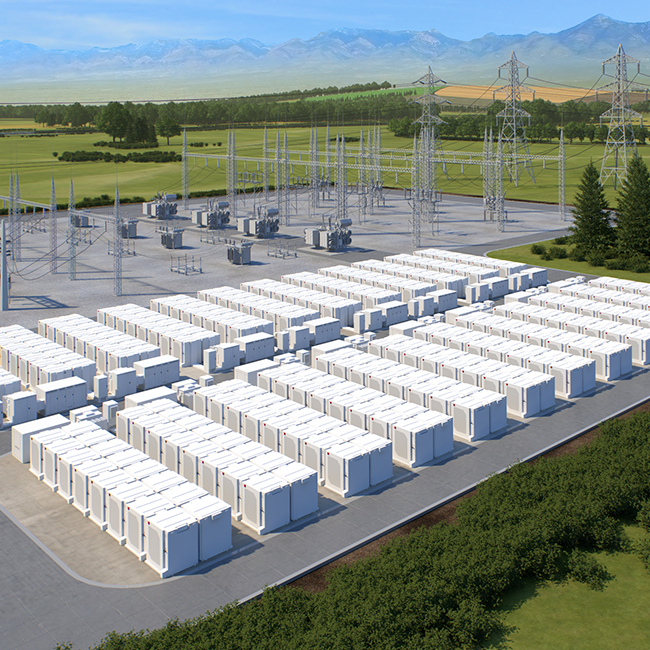The concept and economics behind 450 MW of Grid Booster battery-based energy storage-as-transmission projects in Germany and how they can be replicated around the world
This guest article dives into the key points of a study that Fluence recently commissioned to Consentec, a German-based consultancy. The study explores the innovative concept and operational model of German Grid Booster projects and how similar projects can drive socio-economic value in other power grids around the world.
In October 2022, the German transmission system operator, TransnetBW, announced the construction of a 250 MW battery-based energy storage-as-transmission system called Grid Booster as part of their transmission network. The announcement marked the biggest Storage-as-Transmission-Asset under TSO ownership in the world. This 250 MW project, which will be built with Fluence UltrastackTM, is part of three Grid Booster projects that were first proposed in 2019 as an innovative concept under the German 2030 grid development plan. Under this plan, a second German TSO, TenneT TSO GmbH, is currently procuring another 2 x 100 MW battery assets, and German grid operators have applied for even further systems in past grid development plans, originally targeting 1.3 GW of Storage-as-Transmission-Assets.
The Grid Booster projects have the potential to make a lasting impact on how transmission grids are operated around the world. The specific Grid Booster projects in Germany received regulatory approval, as they will allow for the more efficient operation of the German transmission network and lower redispatch and curtailment costs in the country. This can potentially reduce the need for conventional network reinforcement and operating costs, thus decreasing network charges and ultimately energy costs to consumers in Germany.
The Grid Booster projects will further pilot the innovative concept of reactive grid operation in the German power grid. This concept is also being tested by other projects under procurement around the world including in Australia, Chile, and the United States.
The Innovative Concept of Reactive Grid Operation Enabled by Grid Boosters
To understand the potential of the Grid Booster projects, we need to first understand the impact of the operational change enabled by fast reacting assets like batteries. Power grids are critical infrastructure with a low tolerance for failure. For grid operators, this means that power grids are run under the (n-1) security criterion. This means that if a critical component like a transmission line or a transformer fails, the secure operation of the overall system would not be impaired. To implement this redundancy requirement, grid operators, for example, leave spare capacity on their transmission lines. In other words, when transmission grids are congested and renewable resources are curtailed, there is additional transmission capacity available, but it is held back for system redundancy purposes.
Switching to the reactive grid operation concept, huge batteries are used to quickly resolve overloading of transmission lines, but in contrast to current operation procedures, only after an actual contingency event. The grid booster assets react very fast - within 150 milliseconds – to input or absorb critical power as part of the transmission grid in case of power system component failures. As batteries take over this critical role to resolve the immediate impact during power system contingency events, as shown in the graph below, the previously not fully utilised transmission lines can now be used at an increased capacity. This can reduce grid congestion and prevent expensive curtailment and congestion management that was previously required.

Basic Principle of the Reactive Grid Operation Concept (Schematic Illustration)
Understanding the Economic Value of Grid Booster Batteries
Implementing the Grid Booster concept realises economic savings by reducing costs for congestion management and allowing more renewable energy to be integrated into power grids. How those savings are generated depends on the market design, as outlined in the table below:
In zonal market systems with cost-based congestion management, such as Germany, savings are realised by reduced costs of congestion management and renewable curtailment.
In systems with local marginal pricing, such as parts of the U.S. or Australia, Grid Booster batteries have similar effects like conventional grid reinforcements, increasing transmission capacity between price nodes and hence creating a more efficient energy system.
In markets with different price zones like Italy or Scandinavia, or in respect to different price zones within Europe, the deployment of Grid Booster batteries is comparable to conventional grid expansion measures and, having much lower realization periods, contribute to rapidly achieving benefits from higher cross-border transmission capacities.
In markets with vertically integrated utilities, like in parts of the U.S., Western Australia, and in many developing countries, Grid Booster batteries can result in lower costs for system development and operation. This can outweigh the installation costs for the boosters and ultimately lead to lower prices for consumers.
Overview of Benefits of Grid Booster Assets in Different Market Designs
| Regulatory Environment | Impact | Immediate Benefit For | Benefits for Consumers Via | Incentive/Cost Recovery for Grid Operators Necessary? |
| Zonal | Reduction of congestion management costs | Grid operators | Reduce network tariffs | Depends on regulatory model |
| Local Marginal Pricing (LMP) | Price convergence of nodes | Grid Users | Lower costs for electricity supply (distributional effects might vary) | Yes, similar to conventional grid expansion |
| Cross-zonal | Price convergence of zones | Grid Users | Lower costs for electricity supply (distributional effects might vary) | Yes, similar to conventional grid expansion |
| Vertical Integration | Reduction of total system costs | Vertically integrated utility | Reduced regulated tariffs | Yes, conventional grid expansion might be preferred by utilities in purse cost+ regime |
The first part of the report, “Grid Boosters as innovative solution to optimize power grids – How Storage as Transmission Assets increase the utilization of transmission lines in EHV grids” analyses innovative concept and the operational model of the German Grid Booster projects and how similar projects can drive socio-economic value in other power grids around the world.
The second part of the report will be published shortly and it will look into application and revenue stacking opportunities for Storage-as-Transmission-Assets, based on the example of the German Grid Booster batteries.
Download Consentec’s Report
Grid Boosters as Innovative Solution to Optimize Power Grids |
Improving Project Economics of Grid Booster Batteries |
About Consentec
Consentec, is a Germany-based boutique consultancy with outstanding knowledge on technical and economic questions in power systems. Congestion management has always been in the focus of Consentec’s work. The original idea for Grid Booster batteries is closely linked to previous work by Consentec for German TSOs and government agencies. Consentec advised the German Ministry on Economic Affairs (now BMWK, formerly BMWi) in the initial discussion process on the Grid Booster concept, including modelling exercises and an initial cost-benefit analysis. Hence, Consentec is deeply familiar with the Grid Booster concepts and related chances and challenges.



















